March 25-29, 2013
California Institute of Technology
Pasadena, CA 91125
Speaker Index (incomplete)
- Paul Abell
- Nigel Angold
- John Baker
- Kelley Case
- Julie Castillo-Rogez
- Josh Hopkins
- Damon Landau
- Dan Mazanek
- Nathan Strange
- Ron Turner
- Aline Zimmer
- Richard Zurek
Speakers
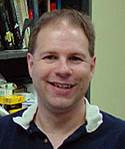 |
Paul Abell Lead Scientist: Astromaterials Research and Exploration Science NASA - Johnson Space Center Robotic Precursor Missions: Enabling Exploration and Science |
Dr. Paul Abell is the Lead Scientist for Planetary Small Bodies assigned to the Astromaterials Research and Exploration Science Directorate at the NASA Johnson Space Center in Houston, Texas. His main areas of interest are physical characterization of near-Earth objects (NEOs) via ground-based and spacecraft observations, examination of NEOs for future robotic and human exploration, and identification of potential resources within the NEO population for future resource utilization. Paul has been studying potentially hazardous asteroids and near-Earth objects for over 15 years. He was a telemetry officer for the Near-Earth Asteroid Rendezvous spacecraft Near-Infrared Spectrometer team and was a science team member on the Japan Aerospace Exploration Agency (JAXA) Hayabusa near-Earth asteroid sample-return mission. Paul was also a member of the Hayabusa contingency recovery team and participated in the successful recovery of the spacecraft's sample return capsule, which returned to Woomera, Australia in June 2010.
Since 2006 Paul has been a member of an internal NASA team that is examining the possibility of sending astronauts to NEOs for long duration human missions circa 2025 and is currently the lead committee member of the Small Bodies Assessment Group chartered with identifying Human Exploration Opportunities for NEOs. In 2009 he became a science team member of the Large Synoptic Survey Telescope (LSST) Solar System Collaboration tasked with identifying NEOs for future robotic and human space missions, and is also the Science Lead for NEO analog activities and operations of the NASA Extreme Environment Mission Operations (NEEMO) and Research and Technology Studies (RATS) projects. Asteroid 8139 (1980 UM1) is named Paulabell in recognition of Paul's contributions to NEO research and exploration studies.
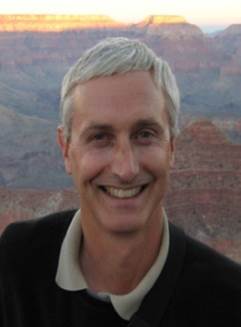 |
Nigel Angold Independent Space Consultant |
Nigel Angold is an independent space consultant and is currently providing systems engineering support for development of the ISIS instrument suite on the Solar Probe Plus spacecraft. He is also the deputy Mission Operations Manager for Interstellar Boundary Explorer (IBEX). Nigel began his career building sounding rocket payloads in the UK and subsequently joined the European Space Agency as a spacecraft systems engineer at the European Space Operations Centre in Darmstadt, Germany. While there, he worked on the successful Meteosat 3 & 4 missions and the ERS-1 Earth observation satellite.
In 1990, he moved to JPL to become Spacecraft Operations Manager of the highly successful ESA/NASA Ulysses mission, supporting the launch of the Space Shuttle Discovery which performed a fly-by of Jupiter and a subsequent voyage over the poles of the Sun. He became Ulysses Mission Operations Manager in 2005 and remained with the project until its completion in 2009, 14 years beyond its expected lifetime. Nigel holds a Bachelor's degree in Chemistry and Physics from University College, London. During his career, Nigel has won numerous ESA and NASA Group Achievement Awards, led the Ulysses Mission Operations Team which won the International SpaceOps Award For Outstanding Achievement in 2008 and was awarded the NASA Exceptional Public Service Medal in 2009.
 |
John Baker Manager: Human and Robotic Mission Systems Office NASA - Jet Propulsion Laboratory |
John Baker is currently the manager for the Human and Robotic Mission Systems Architecture Office and leads both robotic and human mission concepts for exploring the Solar System. He has been at JPL for more than 25 years and has held a variety of technical and managerial positions from spaceflight avionics design to formulating new missions.
 |
Kelley Case Concept Design Methods Chief NASA - Jet Propulsion Laboratory |
Kelley Case is the Concept Design Methods Chief for the JPL Innovation Foundry Program Office. She is responsible for managing JPL's advanced design team, internationally recognized as Team X. Team X is a concurrent engineering team for rapid design and analysis of novel space mission concepts. While Team X consists of over 200 lab wide members, individual study teams are comprised of approximately twenty subsystem engineers that architect a new conceptual space mission over the course of one to three weeks.
In addition, Kelley has managed various Earth Science formulation activities and proposals. Previous job assignments include serving as the Science Data Engineering technical group supervisor in the Instruments and Science Data Systems Division, as well as the Collaborative Engineering technical group supervisor in the Systems and Software Division.
 |
Julie Castillo-Rogez Planetary Geophysicist NASA - Jet Propulsion Laboratory |
Julie Castillo-Rogez is a planetary geophysicist at the Jet Propulsion Laboratory, California Institute of Technology. She is a consultant for mission concepts dealing with the in situ exploration of small bodies and recently supported the design of a mission focused on sending Humans to the Martian system for the scientific exploration of Phobos and Deimos. Castillo-Rogez holds a PhD in seismology and a M. Sc. in geophysics from Rennes University, France.
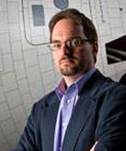 |
Josh Hopkins Space Exploration Architect Lockheed Martin Space Systems Company |
Hopkins leads a team of engineers who develop plans and concepts for a variety of future human exploration missions, including visits to asteroids, Lagrange points, and the moons of Mars. He is responsible for the Plymouth Rock mission study for human exploration of Near Earth Asteroids using the Orion crew exploration vehicle. In a similar capacity he previously led Lockheed Martin's technical team to determine mission capabilities for the Altair lunar lander.
During his 16 years with Lockheed Martin, Hopkins has focused most of his efforts developing space transportation systems and launch vehicles. He began as a trajectory analyst, first on the Athena commercial launch vehicle program, and then in a similar role for the Atlas V launch vehicle. Later, he became responsible for vehicle sizing and system design for a variety of reusable launch vehicle design projects for NASA and the United States Air Force. He has since helped design a variety of expendable and reusable launch vehicles, government and commercial crew transportation spacecraft, and robotic and human exploration vehicles such as lunar landers.
Hopkins received the AIAA Summerfied Book Award in 2003 for coauthoring two editions of the International Reference Guide to Space Launch Systems, the Rotary National Award for Space Achievement Stellar Award in 2007, and a Lockheed Martin NOVA award in 2011.
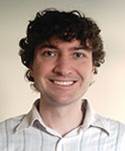 |
Damon Landau Mission Design Engineer: Outer Planet Mission Analysis Group NASA - Jet Propulsion Laboratory |
Damon Landau is an outer planet mission analyst at the Jet Propulsion Laboratory, where his primary interests are mission design and trajectory optimization. Before beginning his career at JPL, he received a Ph.D. in 2006 from Purdue University where he examined various strategies for the sustained human exploration of Mars. In February 2007 Damon moved to sunny CA to pursue the glamorous life of robotic space exploration. Currently his work focuses on the application of solar electric propulsion for missions to comets and all kinds of asteroids. Damon also performs trajectory analyses in preparation of Juno's arrival at Jupiter in July 2016. As a diversion to robotic missions, he worked on NASA's Near-Earth Asteroid Human Space Flight Accessible Targets Study to survey exciting locations for astronauts to visit.
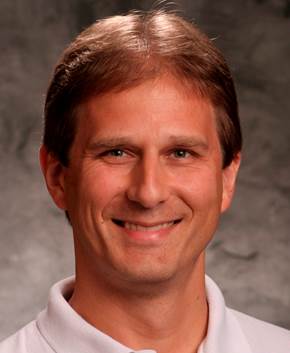 |
Dan Mazanek Senior Space Systems Engineer NASA - Langley Research Center Considerations for Designing a Human Mission to the Martian Moons |
Dan Mazanek is a Senior Space Systems Engineer at NASA's Langley Research Center (LaRC) with over 23 years of experience in space mission and architecture formulation, conceptual design and sizing of human and robotic spacecraft, and the research and development of supporting engineering analytical software tools and simulation environments. He graduated with a B.S. degree in Aerospace Engineering from Virginia Tech in 1989. Mr. Mazanek has led multiple study efforts to investigate sending humans beyond low-Earth orbit, including the development of a Near-Earth Object (NEO) crewed mission concept in 2005 and as the study lead for the Descent-Assisted Split-Habitat (DASH) lunar lander design. He was also the Comet/Asteroid Protection System (CAPS) Study lead under NASA's Revolutionary Aerospace Systems Concepts (RASC) program in 2001-2002 and holds a patent for the invention of the Hybrid Propellant Module (HPM), developed as part of a future modular, reusable in-space transportation infrastructure for human missions.
Mr. Mazanek is currently the NEO mission lead analyst at LaRC. He is a technical expert and a leader in the field of human and robotic missions to small planetary bodies and has experience in developing human mission architectures and destination operations for near-Earth asteroids and the Martian moons, Phobos and Deimos. He is currently leading analysis efforts at LaRC for the Asteroid Retrieval Mission concept and he serves as the Near-Earth Asteroid Destination Co-Lead for NASA's Human Spaceflight Architecture Team. Mr. Mazanek currently resides in Williamsburg, Virginia with his wife Deborah, son Kyle, and daughters Sarah and Lauren.
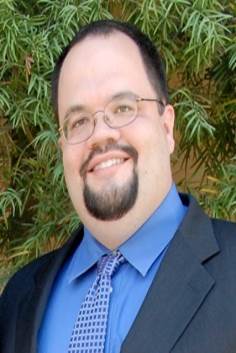 |
Nathan Strange Mission Architecture and Design NASA - Jet Propulsion Laboratory |
Nathan Strange has worked at NASA's Jet Propulsion Laboratory (JPL) since 2000, where he is currently a systems engineer for mission formulation in the Mission Concepts Section. Prior to his work in mission formulation, he was one of the four tour designers for the Cassini-Huygens mission to Saturn. Nathan has received two NASA Exceptional Achievement Medals (in 2008 and 2011) for his work on gravity-assist tour design and has also received the 2010 JPL Lew Allen Award for Excellence, JPL's highest honor given to scientists and technologist who make significant contributions in the early years of their career. He holds a M.S. in Aeronautics & Astronautics from Purdue University (2000) as well as two B.S. degrees in Aeronautics & Astronautics and in Physics also from Purdue (1997).
 |
Ron Turner Distinguished Analyst and ANSER Fellow Analytic Services Inc. Radiation Risks and Challenges Associated with Human Missions to Phobos/Deimos |
Dr. Turner is a Fellow with Analytic Services Inc. He is an internationally recognized expert in radiation risk management for astronauts, particularly in response to solar storms. For nine years he was the ANSER point of contact to the NASA Institute for Advanced Concepts (NIAC), an independent institute charged with creating a vision of future space opportunities to lead NASA into the twenty-first century, and he is currently the Senior Science Advisor to the new, NASA Innovative Advanced Concepts Program. He was a Participating Scientist on the Mars Odyssey program. He was Co-Lead of the Research to Operations working group supporting the NRC Heliophysics Decadal Survey, and recently supported the NRC Committee for the Evaluation of Radiation Shielding for Space Exploration (May 2008).
He is on the Advisory Council to the National Space Biomedical Research Institute Center for Acute Radiation Research. He served on an NRC Committee looking at precursor measurements necessary to support human operations on the surface of Mars (May 2002). He was chair of the NRC Human Health and Support Technologies panel of the NASA Capabilities Technology Roadmap Review in 2005. He supported an NRC report on Space Physics Support to NASA's Exploration Vision. He earned his Ph.D. in physics from the Ohio State University.
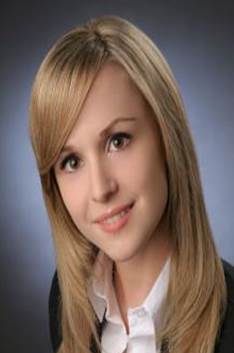 |
Aline Zimmer Systems Engineer, Mission Concept Section NASA - Jet Propulsion Laboratory |
Aline Zimmer received a M.Sc. in Aerospace Engineering from the Georgia Institute of Technology and a Dr.-Ing. (German Ph.D. equivalent) in Aerospace Engineering from the University of Stuttgart, Germany. She now works as a systems engineer for the Mission Concept Section of NASA’s Jet Propulsion Laboratory (JPL). Her research interests include astrodynamics, mission analysis, asteroid exploration, and human spaceflight.
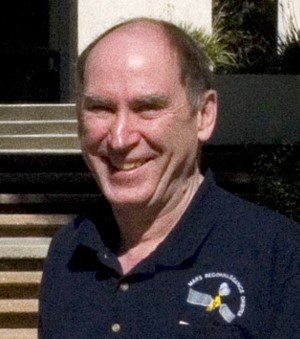 |
Richard Zurek Chief Scientist for the Mars Program Office NASA - Jet Propulsion Laboratory |
Rich Zurek holds a Ph.D. in Atmospheric Sciences from the University of Washington (Seattle, 1974) and started his career with post-doctoral fellowships at the National Center for Atmospheric Research and the University of Colorado in 1974-76. Since 1976, Dr. Zurek has been employed at the Jet Propulsion Laboratory (JPL), California Institute of Technology. While at JPL, Dr. Zurek has studied the atmospheres of Earth and Mars, including the causes and effects of the great dust storms that occur episodically on Mars. As a researcher, he analyzed data from the Mariner 6 & 7 fly-bys, the Mariner 9 orbiter, and the Viking Orbiters and Landers. As a Theoretical Investigator on the Upper Atmosphere Research Satellite (UARS), he helped pioneer studies separating transport from photochemical effects on ozone change as observed from space.
Dr. Zurek served as Manager of the JPL Earth and Space Sciences Division from 1998-2001. He also served as the Project Scientist for the Mars Surveyor '98 missions (Mars Climate Orbiter and Mars Polar Lander). More recently, he has been heavily involved in the development and implementation of recent missions to Mars, including lead of atmospheric advisory groups supporting the aerobraking phases of the Mars Global Surveyor, the 2001 Mars Odyssey and Mars Reconnaissance Orbiter (MRO) spacecraft. He remains the Project Scientist for MRO, now in its seventh year of observations of the atmosphere, surface, and subsurface of Mars. These activities, together with his published research, have led to appointments at JPL as a Senior Research Scientist and a JPL Fellow. Dr. Zurek is currently the Chief Scientist for the Mars Program at the Jet Propulsion Laboratory (JPL), California Institute of Technology.






